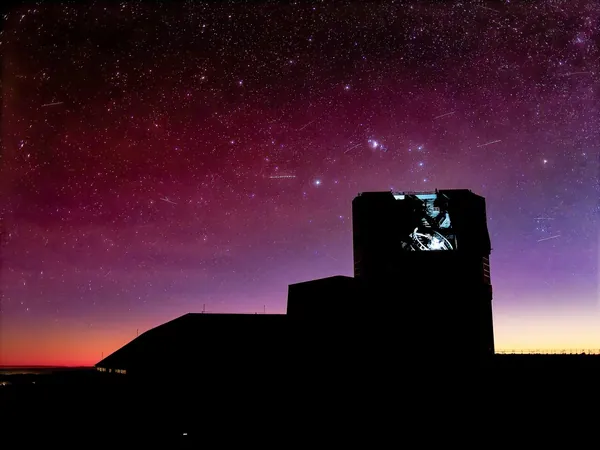
Astounding Discovery: Why a Distant Star Almost Vanished!
2025-08-25
Author: Siti
In a thrilling turn of events, astronomers have unveiled the mystery behind the puzzling dimming of a distant star known as ASASSN-24fw. This star, stable for over a decade, almost completely faded from view for eight whole months!
Between the end of 2024 and the start of 2025, ASASSN-24fw experienced a staggering 97% drop in brightness before reigniting. Scientists have since been buzzing with theories about this unprecedented event.
Now, thanks to a groundbreaking study by an international team spearheaded by The Ohio State University, we may finally have an answer! Published in The Open Journal of Astrophysics, researchers propose that a massive cloud of dust and gas surrounding the star blocked Earth's view rather than indicating a change in the star's internal processes.
Raquel Forés-Toribio, the study's lead author, stated, "We investigated three potential scenarios, and evidence points strongly to a dust disk around the star."
ASASSN-24fw is an F-type star, slightly more massive than our sun and located approximately 3,000 light-years away. The cloud surrounding it is estimated to span over 1.3 astronomical units—larger than the distance between Earth and the Sun! Researchers believe this debris includes clusters of carbon and water ice, akin to the material found in planet-forming disks, potentially offering insights into how stars develop.
However, there's more to the story! Forés-Toribio noted that a smaller, cooler star might also be orbiting ASASSN-24fw, suggesting a hidden binary system. This could explain the unusual changes in brightness.
"Our findings propose that there is likely a second star in a binary system, which could be responsible for the variable eclipses we observed," she continued.
The rarity of such dimming systems cannot be overstated. Chris Kochanek, a co-author and professor of astronomy at Ohio State, remarked on the uniqueness of ASASSN-24fw, stating, "Even our exhaustive search didn’t reveal many parallels, which is intriguing in itself. We hope future discoveries will unveil patterns we currently cannot see.”
Discovered through the All-Sky Automated Survey for Supernovae (ASAS-SN), this system illustrates the universe's boundless capacity to surprise us. Krzysztof Stanek, another co-author, emphasized that even with a variety of telescopes at our disposal, we continue to make shocking discoveries.
The ASASSN-24fw system is expected to undergo an eclipse approximately every 43.8 years, with the next occurrence anticipated around 2068. Although some researchers may not be around to witness it, they are committed to leaving behind data that future astronomers can use.
“We want our data to be valuable even a hundred years from now. The goal of ASAS-SN is to ensure that when something happens in the sky, historical data is readily available,” Stanek highlighted.
Moving forward, the team aims to utilize powerful telescopes like the James Webb Space Telescope to glean further details about this unique system as it brightens once again.
In summary, this astonishing study illustrates how investigating peculiar celestial phenomena pushes our understanding of astrophysics, leading to exciting revelations in the universe!


 Brasil (PT)
Brasil (PT)
 Canada (EN)
Canada (EN)
 Chile (ES)
Chile (ES)
 Česko (CS)
Česko (CS)
 대한민국 (KO)
대한민국 (KO)
 España (ES)
España (ES)
 France (FR)
France (FR)
 Hong Kong (EN)
Hong Kong (EN)
 Italia (IT)
Italia (IT)
 日本 (JA)
日本 (JA)
 Magyarország (HU)
Magyarország (HU)
 Norge (NO)
Norge (NO)
 Polska (PL)
Polska (PL)
 Schweiz (DE)
Schweiz (DE)
 Singapore (EN)
Singapore (EN)
 Sverige (SV)
Sverige (SV)
 Suomi (FI)
Suomi (FI)
 Türkiye (TR)
Türkiye (TR)
 الإمارات العربية المتحدة (AR)
الإمارات العربية المتحدة (AR)